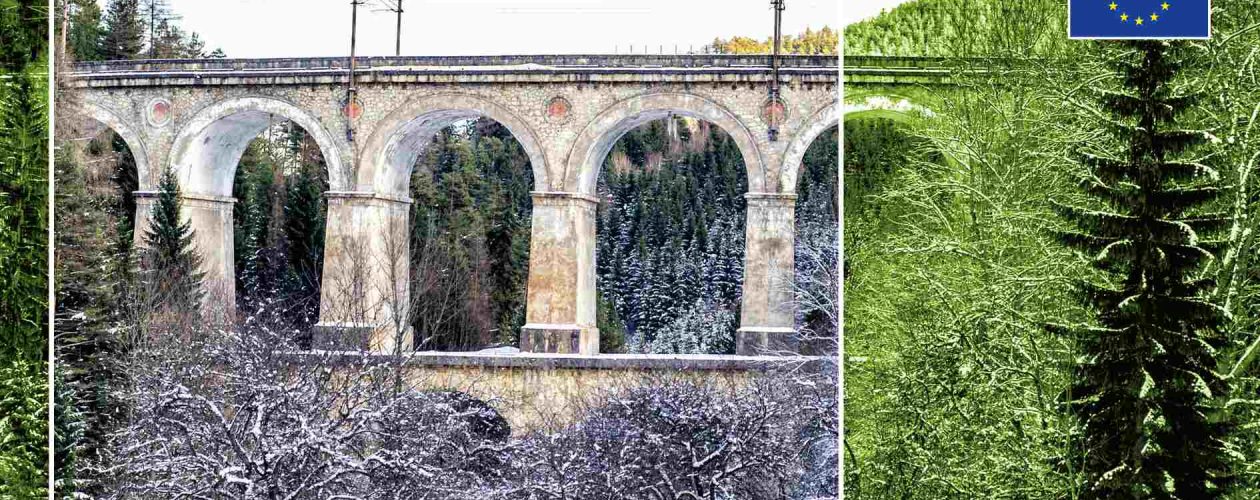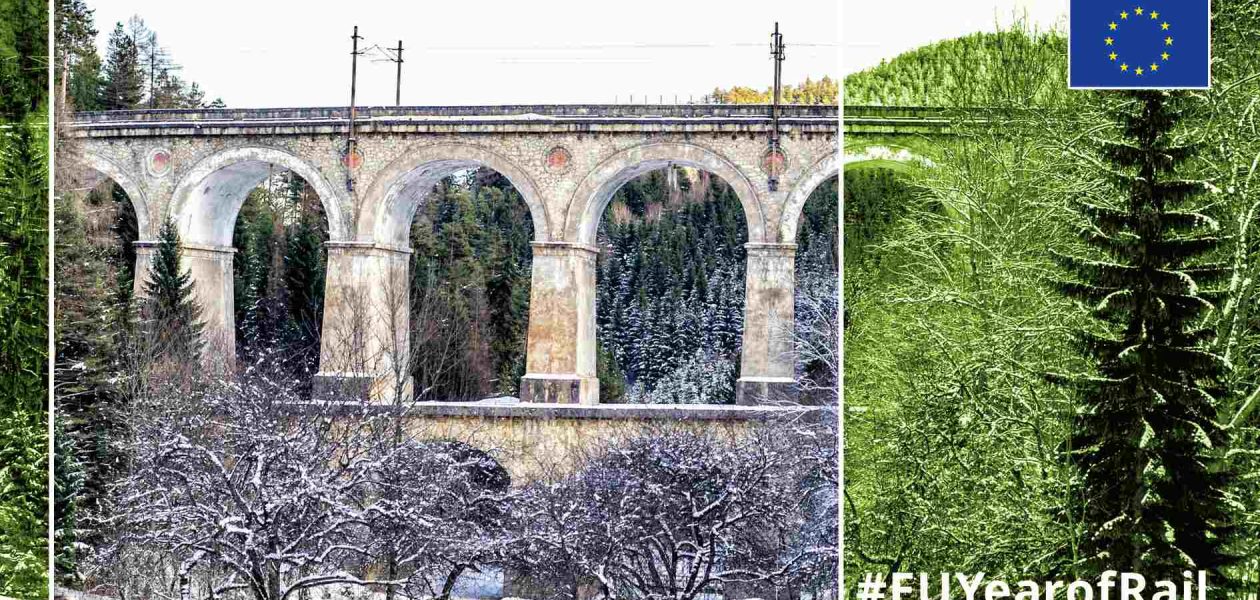 Interview with Gilbert Perrin, co-founder of the European Greenways Association and initiator of the greenways movement in Belgium
Interview with Gilbert Perrin, co-founder of the European Greenways Association and initiator of the greenways movement in Belgium
by Dominika Zaręba
Vitoria-Gasteiz (VI European Greenways Conference), Kraków / Brussels (on-line), 2019, 2020
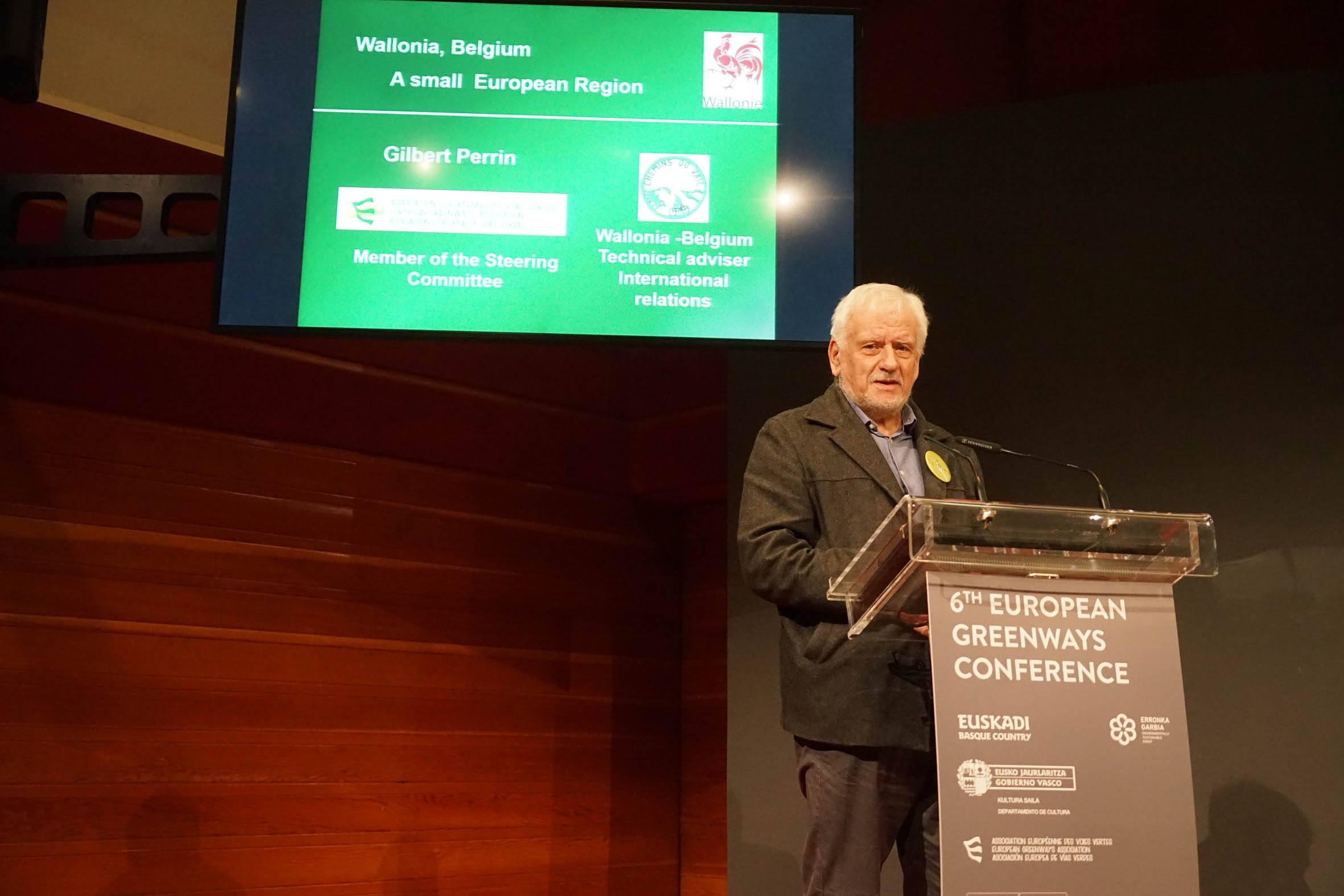
D: We talk to Gilbert Perrin, initiator of the greenways movement in Belgium, co-founder and former President of the European Greenways Association, international advisor of the Chemins du Rail Association, idea maker and leader of Greenways in Europe.
At first I would like to ask you about the beginning of your adventure with railways and Greenways, how the story started?
G: It is a long story. My father was a railway fan and he brought me to see all the new trains and infrastructure, also the last steam train in Switzerland. I was in the front of steam locomotives since my childhood. After that I was a member of different railways associations, especially active with the CFV3V, a well known historical steam railway and museum in Belgium. In 1985 we celebrated the 150th anniversary of Belgian railways and among the people in the RTBF, the Belgian French speaking Radio and TV, where I worked at that time, we discussed who would make a program dedicated to this event. My director said: – Gilbert, you like railways, you will do it… I started making the history of the Belgian railways. Part of it was the fact that Belgium after WW2 has the densest railway network in Europe.
D: What a fascinating story!
G: Yes, but we also have to explain that after WW2 series of lines were closed, one after another and the average of cutting was about 40-50 km a year… The network was very quickly diminishing and I needed to have pictures to show all of that. We were in very good contact with the National Railway Company in Belgium (SNCB) and I asked them to help me to find disused railways. They gave me the list. So, we went with my camera operator to these different places to make the documentation. I asked myself: – How many kilometers of disused railways like these do we have? The answer was easy. Before the war we had 5,000 km, now we have 3,400, so the total number of the disused railways is 1,600 km. Incredible!
D: It was a lot! In the whole Belgium?
G: Yes, in the whole country. There were more railways in Wallonia because it was an industrial region with coal mines and with steel industry. So, they closed more lines here, because coal industry was locked by that time. It was a very special heritage! Railway lines full of trees and flowers, sometimes with a rail, sometimes without, old train stations and other infrastructure. In 1991, when I worked for TV already for 20 years, I decided I need some longer break and I took six months holidays. During that time, among other things, I visited almost all of these 1,600 km disused railways. Sometimes with my bicycle, by most on them on foot.
D: You did it in a half a year… You must have found precious cultural heritage and fascinating landscapes…
G: Yes, I discovered incredible heritage and I saw that some of those disused railways were good for walking or riding a bicycle. I decided we should do something with this heritage. I wrote my first book, where I described all those disused railways and proposed some routes you can ride in the countryside using also small streets to make a loop. After that I received series of letters – people were saying: – We totally agree, we should do something about this heritage. In 1995 I left TV and as a retired person I decided to establish the association with all those people who wrote to me before. In 1996 we founded our organization Chemins du Rail (Railway Paths) based on a model of the American association I discovered some years before – Rails-to-Trails Conservancy. They did exactly what we wanted in Belgium. Because I was working for the French speaking Belgium TV, most of my contacts were from the French part of the country in Wallonia. That’s why we founded the association in the Walloon Region using the French name. At that time there was a real threat to these disused railways because the National Railway was able to sell piece by piece of land and it wouldn’t be the network anymore. It would be a puzzle. So, we had to do something…
D: Tell us how you saved a great part of the disused railways in Wallonia as the Chemins du Rail.
G: We decided very quickly to start a petition. We received an incredible support from the public and the media, also from people working for the National Railway. In two weeks, we had more than 2,000 signatures and we went to the Minister for Public Works in Wallonia, Michel Lebrun, saying: – Mr. Minister, we should do something. And we were very surprised when he answered: – Yes, that’s wonderful, because I had since years ago a project called RAVeL – the autonomous network of slow ways (in French “réseau autonome de voies lentes”) made of disused railways and towpaths along the canals and the rivers. But with the disused railways I don’t know what to do. They are in the ownership of the Federal Railway. We answered – Yes, you are right, we should make an agreement with the National Railway. One year later, the agreement was signed stating that no piece of disused railways can be sold to anybody as long as the Walloon Region says it is needed for our network. It was really a big victory in short term time.
D: Like a miracle! You had the most important supporter for your project – the regional government!
G: The Minister also said: – Listen to me. I have a project. You have an idea exactly in the same line. We should work together. – What do you mean Mr. Minister? – we asked. – I suggest that I will give you subsidies each year, so you are able to have the office, one full time person (some work cannot be done by the volunteers). We will pay your expenses for traveling, printing, buying some equipment etc… And, since then, from 1996 on we worked in the cooperation with the Walloon Region to develop this network.
D: Infrastructure was the key issue. How did your work look like?
G: At first, we were asked to work on the feasibility studies concerning each line, assessing in which state is it, how much does it cost to make a greenway, etc. We had no experiences in this field, but the engineers of the regional administration helped us to start. We also prepared signage plans and we were involved in the promotion of the network – at the cycling fairs, tourism fairs, other events. We promoted the RAVeL for the Walloon Region as Chemins du Rail Association. The important issue was to make a plan in this way that the greenway has a connection with the active line and the train station, so you can arrive by train with your bicycle or for walking. Accessibility was a priority. After that it was important to improve the lines where only short sections had been made. Also, there was a pressure from the municipalities or the provinces. They were saying to the Minister – We also want our greenway. Some projects were started by political motivation but since politics helps to go further – why not? When I wrote my first book in 1993 there were 82 km of trails where you could cycle. We reached now 700 km of greenways on disused railways!
D: I wanted to ask you also about RAVeL – is it the Walloon name for a greenway?
G: RAVeL (Réseau Autonome des VoiEs Lentes, Autonomous Network of Slow Ways) is a brand developed only in Wallonia. But if you look at the website of RAVeL, they define it using the equivalent of the word “greenways”, in French – Voies Vertes en Wallonie. They agreed to use the word voie verte in the sense of the European Lille Declaration on Greenways signed in 2000.
D: At the beginning you used the name rails-to-trails? I am curious how you encountered the greenways name?
G: Rails-to-trails was a model and we tried to have a word for that. But on the Walloon level the word was already chosen by the Minister – Autonomous network of Slow Ways. RAVeL. Autonomous means car free. But there was a second step. When I went to Washington D.C. the people from the Rails-to-Trails Conservancy told me about other projects of that kind in Europe. For example, in Spain they already had many kilometers of disused railways and they called them vías verdes, which in Spanish means greenways. When I came back to Belgium, I explained to the Minister that there are already similar kinds of infrastructures in other European countries. I said: – We are in the middle of Europe, France is 100 km away, Luxembourg – 80 km, Germany – 70 km, The Netherlands – 120 km – why don’t we organize a conference for the first time with all the people who deal with similar projects in Europe?
D: And you did it! In which year was it?
G: In fact, the conference was in 1997 just one year after we founded the association, after we started working with the region.
D: Very quickly.
G: Well, people often complain that things go very slowly with the administration but we didn’t experience that in fact. In 1997 we organized this conference in the old, former Benedictine Abbey in Val Dieu, not far from Flanders, Germany and the Netherlands, a symbol! It was also the opportunity for most of the people to discover the EuroVelo project (greenways can be the support for EuroVelo). The Sunday afternoon we decided that the workshop will go towards the idea of a European Greenways Association. Well, it was really a wish at that moment, but after two hours all people said we should sign the agreement and go for it. The first person who rose that topic to prepare the association was Joaquín Jimenez, who was at that time president of the Vías Verdes in Spain.
D: … From the Fundación de los Ferrocarriles Españoles – Spanish Railway Foundation.
G: Yes, and he said we will have a meeting about EuroVelo in Spain next year. Why don’t we have a workshop about creating this association then. And we did it and have our first workshop about preparing the session in Logroño in the Rioja region with some greenways already developed, so everything was in good hands, simply perfect. In Logroño we decided that we will start officially the association. And all of the participants agreed that – because it was initiated for the first time in the Walloon region a year before – we will found the association in the capital of the Walloon Region with respect of all that the region had done before. In 1998 we founded the European Greenways Association (EGWA) in Namur. Also, we celebrated the 20th anniversary of EGWA in 2018 in Namur.
D: Namur is the capital of greenways! Which countries participated in this first conference?
G: In the first conference we had people from Spain of course, France, Germany, Austria, the Netherlands, Flanders, Great Britain (from Sustrans which is a very well-known association). We had also participants from the United States – Paul Labovitz who was in charge of the greenways in the National Park Service, as well as people whom I call godmother and godfather of the European Greenways – Meredith and Olivier Seikel. They visited Belgium in 1993 and found my first book in a bookshop in Brussels. When they came back to the United States, they sent me a letter saying that they read my book about disused railways and wrote me about the Rails-to-Trails association in the U.S.
D: This is the interesting story how the European Greenways Association was created! Thanks to the meeting of the right people at the right moment…
G: This is how the adventure of the European Greenways adventure started. I am very glad that we have now 50 members in 15 countries. And the concept of greenways is really developing now in the way we tried to promote it!
D: What is your bigger dream about greenways in your country, maybe also in Europe, in the world?
G: Well, in fact it’s strange but I don’t have so many dreams because I saw so many of my dreams becoming reality. Instead of a dream I have a wish that I will inaugurate the last kilometer of disused railway in Wallonia… There are 200 km left, it takes 10 years to do that with the present budget. My wish is also that this concept of greenways will spread more and more in Europe and it really happens. There are new great greenways in Latvia, the Czech Republic, also in Serbia, Russia, Poland…
D: The COVID-19 pandemic showed how important is the human link to the nature. I guess greenways could play a special role in these difficult times…
For different reasons, people (re-)discover the attractivity of what we call “soft mobility” like walking or cycling as an opportunity to improve the quality of life, their health and the protection of the environment. COVID-19 together with the climate change contribute to that. Greenways are of course an excellent tool for encouraging this movement because they offer safe car free routes, low grade slopes and quiet landscapes. If greenways have been often considered as a tool for leisure and tourism, many municipalities, at least in the Walloon Region, discover now that they are also important for reaching train stations, schools, working places, etc.
D: Thank you Gilbert. It was so inspiring. You should write another book about history of Greenways in Europe, also make a film showing this amazing story with examples from different countries.
Images from the VI European Greenways Conference 2019, that was held in Vitoria-Gasteiz (Spain), where the interview took place.
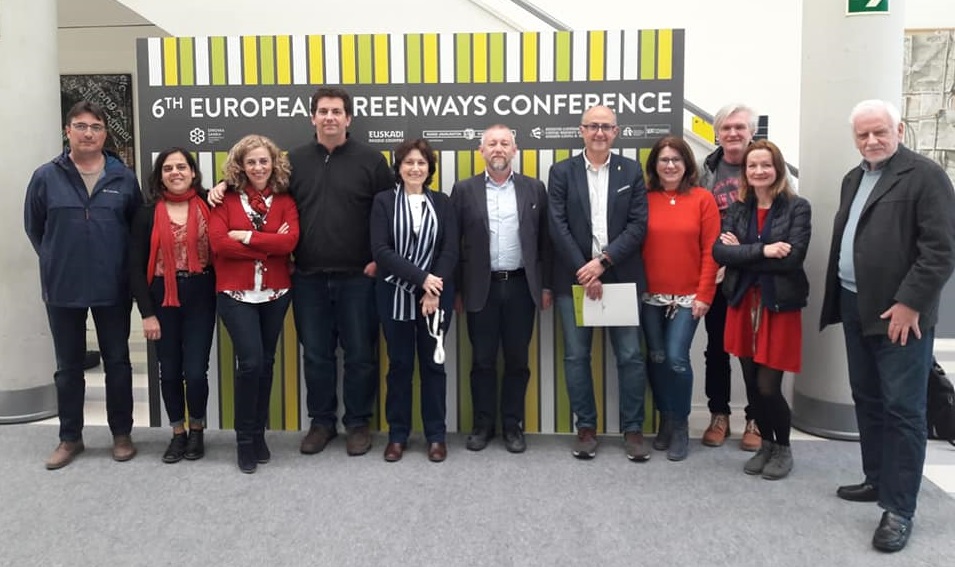
Executive committee and EGWA members in Vitoria – Gasteiz, after the meeting.
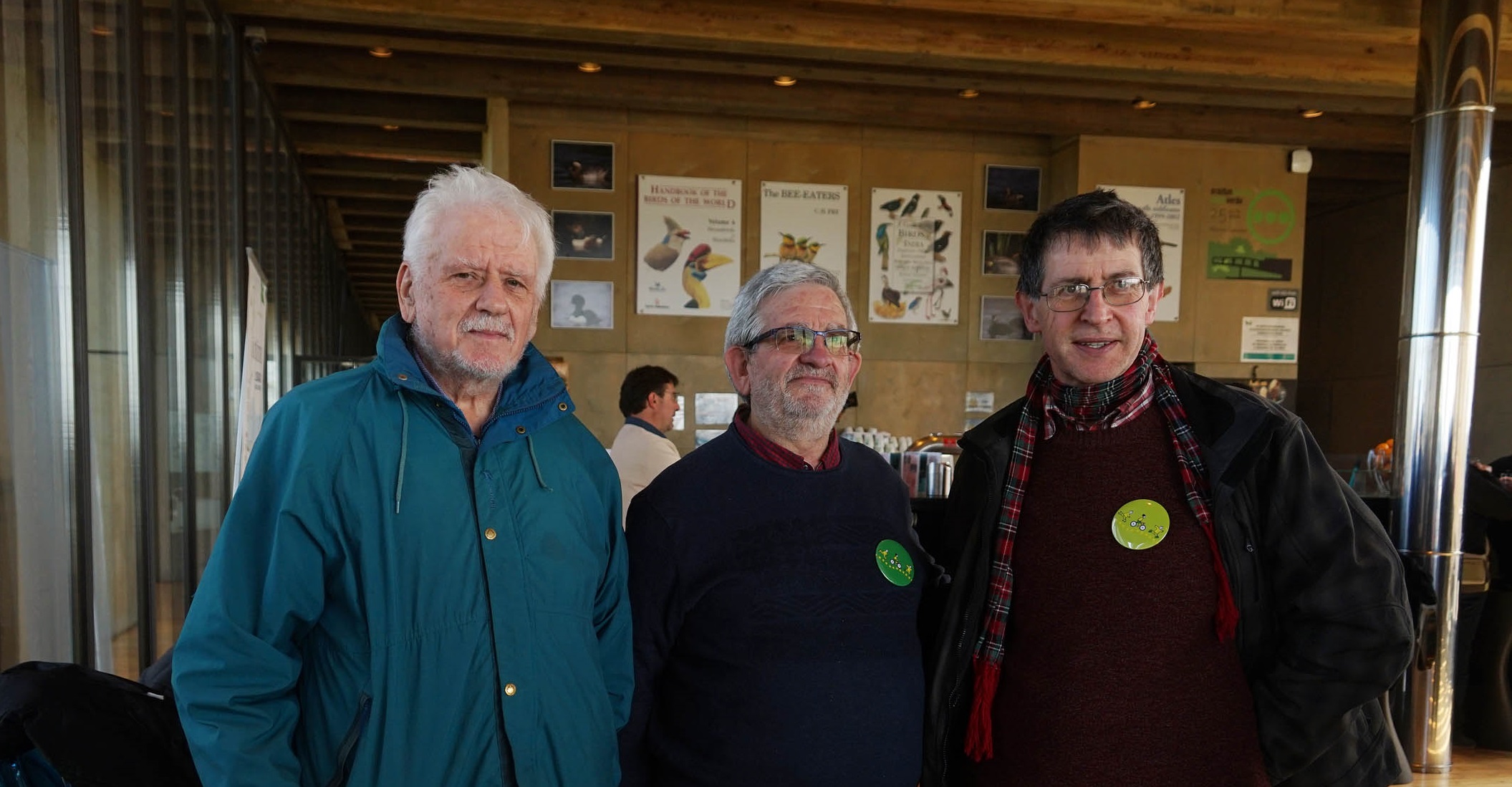
Gilbert Perrin (Belgium) with Liam Omahony, Chairman of the Great Southern Trail (Ireland) promoter of the transformation of this abandoned line into a greenway, and Javier Suso (Spain), a key person to know and keep alive the history of the “Trenico”, the Basque-Navarre Railway transformed into a greenway. The three share their love for the railway and were concerned for the loss of a valuable heritage after the closure of the railway lines. This motivated them to carry out a decisive action to transform the abandoned lines into greenways for the preservation and maintenance of the railway heritage.
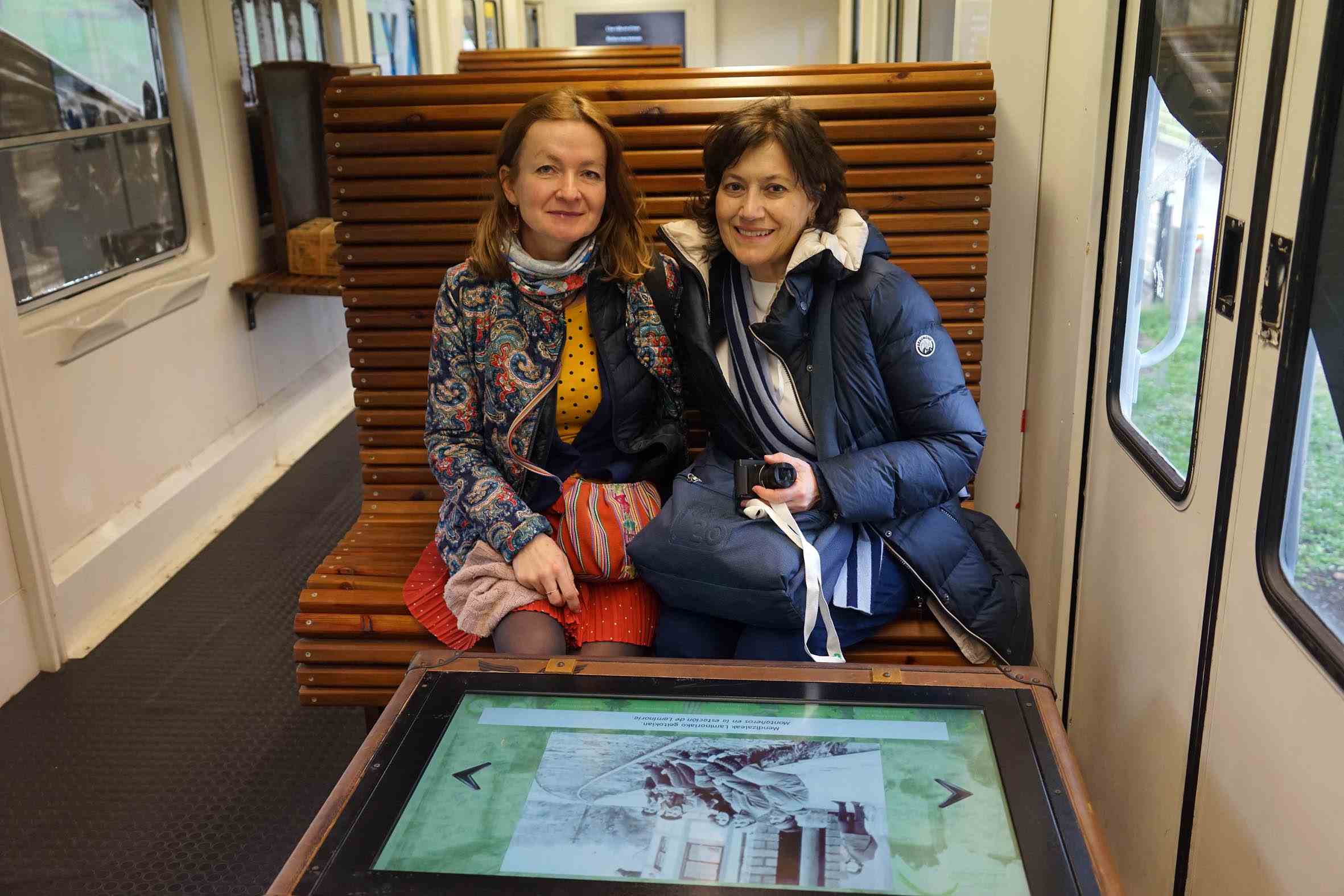
Dominika Zareba the author of the interview with EGWA director Mercedes Muñoz, during the visit to the Antoñana old railway station, transformed into the Basque-Navarre Railway Greenway Interpretation & information & rental bike Centre.
You can find all the presentations and videos of the 6th European Greenways Conference 2019 held in Vitoria –Gasteiz here, Including the presentations from Gilbert Perrin and Liam O’Mahony
———
Gilbert Perrin – former engineer in electronics for the Polytechnic High School of the University of Lausanne (Switzerland), professor for mathematics, physics and chemistry for the Pomare College in Papeete (French Polynesia), then TV director and later in charge of Imagique, the computer image department for the RTBF, the Belgian French speaking television. Initiator of the greenways movement in Belgium, co-founder and former President of the European Greenways Association, international advisor of the Chemins du Rail Association, idea maker and leader of Greenways in Europe.
Dominika Zaręba – author of Poland’s first book dedicated to ecotourism (“Ekoturystyka”, PWN, 4th ed. 2020). Writer, freelance columnist and traveler, author of tourist guides and books. She laid the foundations for the greenways program in Poland (co-founded Greenways Poland Association) and initiated creation of greenway networks across Central and Eastern Europe. She is active with many environmental NGOs and ecotourism networks in Europe and world-wide, such as Environmental Partnership Association (Partnership Fund) and the Global Ecotourism Network.
Published on 29/April/2021

